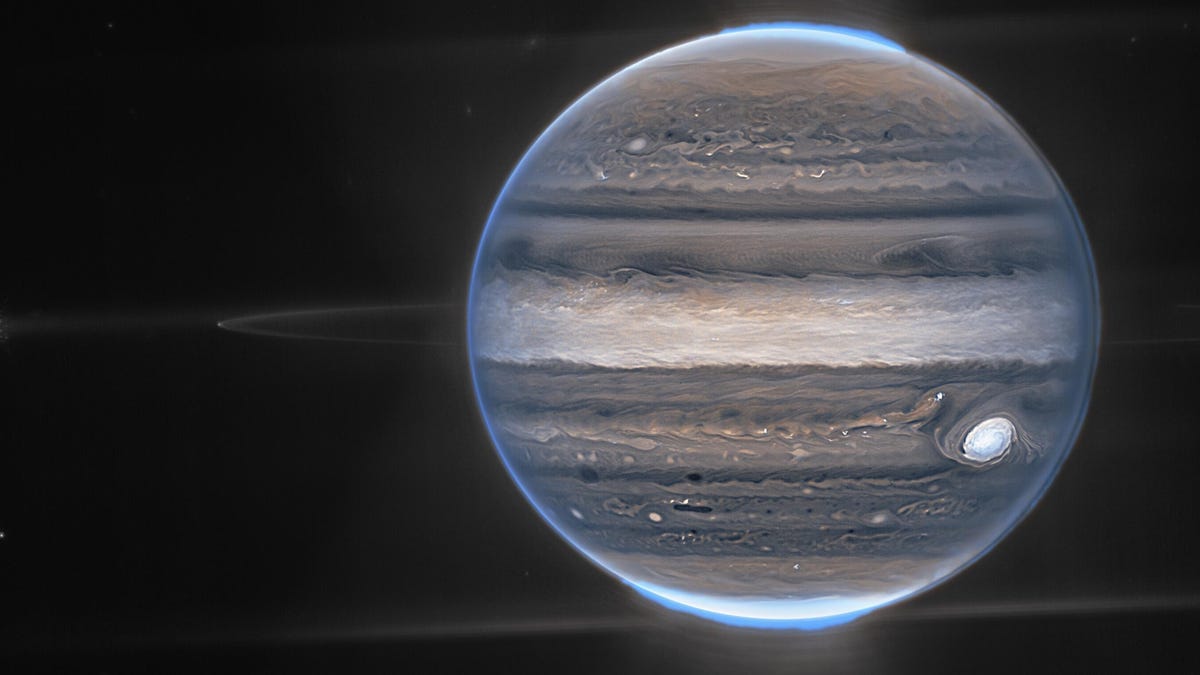See Jupiter's Closest Encounter With Earth in Decades Right Now
If you've got clear skies and eyes, you have all you need.

The backyard view won't be as dramatic as this image from NASA's James Webb Space Telescope, but it might be the opportunity of a generation to see Jupiter with the naked eye.
The biggest thing in our cosmic neighborhood that isn't the sun is about as close as it's been in most of our lifetimes and easy to spot tonight.
If you make a habit at all of skywatching after dark, you've probably noticed a bright star in the east in the evenings lately. That's actually not a star, and it's not Venus -- often one of the most visible planets. It's Jupiter, the largest planet in the solar system, brightening itself up as it comes closer to us than it has at any point in the past seven decades.
The huge gas giant is set to reach something called opposition on Sept. 26, which is when the planet will be opposite the sun in the sky. This is why Jupiter has been growing increasingly visible in the east, shortly after the sun sets opposite it in the west.
Put another way, we are at the point in orbit when we're about to pass Jupiter, or we're at the closest point to Jupiter in our orbit relative to where it is in its orbit. Now, because orbits aren't perfectly circular things, the distance between our two planets can vary from opposition to opposition (an opposition with Jupiter takes place roughly every 13 months). It just so happens that this will be the closest our worlds will be to each other in at least 70 years.
So this could be the opportunity of a lifetime to get a good view of Jupiter.
As of right now, Jupiter is already the brightest celestial object in the night sky outside of the moon. It's pretty easy to spot. Just head outside a couple of hours after sunset, look due east at the horizon and then start to scan upward looking for the brightest object that doesn't appear to twinkle like the other stars.
This is probably also a great opportunity to practice with whatever level of telescope or binoculars you might have handy to see if you can get a more detailed view and maybe even make out a few of Jupiter's largest moons.
The official moment of opposition is on Sept. 26, when Jupiter will technically be at its closest and brightest but probably not a noticeable amount, especially with the naked eye. What will happen on that evening, though, is that the planet will rise very close to sunset and then set very close to sunrise.
But you can get out and get the best view of a few generations right now. And mark your calendars for the next planetary opposition, when Mars will be bright in the sky in early December.

